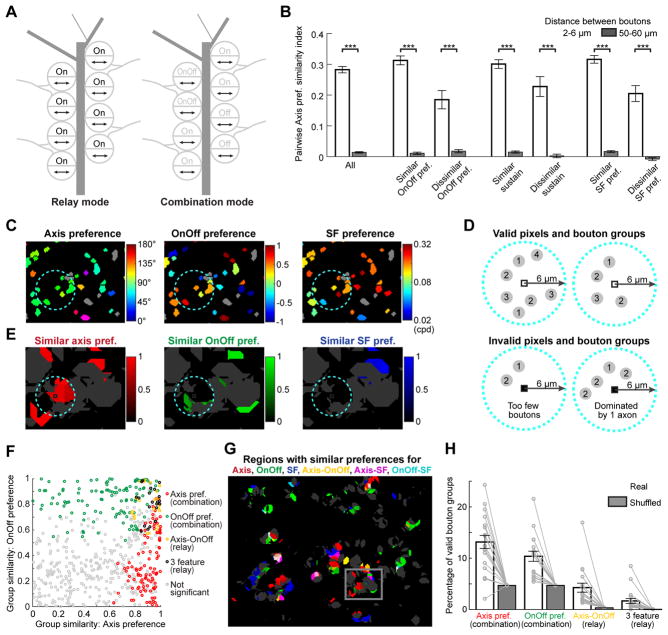Figure 6. Relay-mode and combination-mode convergence of nearby RGC boutons.
A. RGC axons often multiplex information (e.g. motion axis and OnOff). Nearby boutons from different axons could exhibit similar preferences for all features (‘relay mode’, left) or for a single feature (‘combination mode’, right).
B. Bouton pairs 2–6 μm apart with either similar or dissimilar preferences for OnOff, OnOff sustainedness, or SF all exhibit similar motion axis preference. N’s, from left to right: 3,258; 70,522; 2,004; 32,916; 391; 13,075; 2,042; 39,071; 422; 12,639; 2,635; 49,163; 578; 18,498. All bar plots: mean ± s.e.m. ***p < 0.001; Mann-Whitney-Wilcoxon test.
C. Left to right: maps of boutons in an example subregion, colored by bouton preferences for motion axis, OnOff or SF, respectively. Gray boutons lack well-defined preference estimates.
D. Schematic illustrating analyses of ‘groupwise’ functional similarity. Analyses were restricted to pixels (black squares) that contained groups of 3 or more boutons (gray discs) within a concentric circle of 6 μm radius (blue dotted circles). In addition, we required that these boutons have well-defined preference estimates for motion axis, OnOff and SF, and that <67% of boutons in the group belong to any single axon (see also Figure S7B). Bouton numbering denotes axon identity.
E. Pixel maps of groupwise similarity index for motion axis (left), OnOff (middle), and SF preferences (right), for the subregion in C. Pixels with significant similarity index values (exceeding 95% of shuffled estimates) are colored, while other valid pixels are gray and invalid pixels are black. Dashed cyan circles in C and E illustrate an example of a pixel surrounded by a local group of boutons with similar preferences for axis (left) but not for other features (middle and right).
F. Groupwise similarity indices for motion axis preference and OnOff preference (as in Figure 6E), plotted for valid pixels (same FOV as C, E). Bouton groups could exhibit similar preferences for motion axis only (‘Axis preference combination mode’, red), for OnOff only (‘OnOff preference combination mode’, green) or for both features (‘Axis-OnOff relay mode’, yellow). Other groups additionally demonstrated significant groupwise similarity for SF preference (‘3 feature relay’, black). Gray circles indicate groups that did not exhibit significant groupwise similarity (i.e. greater than 95% of shuffled estimates) for either feature preference.
G. Pseudocolor image illustrating various modes of convergence for groups of boutons in an example FOV (gray square, subregion shown in E). Red, green and blue: combination-mode groups with similar preference for only one feature (motion axis, OnOff, or SF, respectively). Yellow, purple, cyan, white: relay-mode bouton groups with similar preferences for two or more features.
H. Percentages of valid groups of nearby boutons with significant similarity in preference for only axis or OnOff preference (combination mode), for axis and OnOff preference (relay mode), or for all three feature preferences (3 feature relay mode), for each of 19 FOV. The percentages of unique bouton groups of each mode were consistently higher than expected by chance (shuffled data, gray bars).
See also Figure S7A–E.

